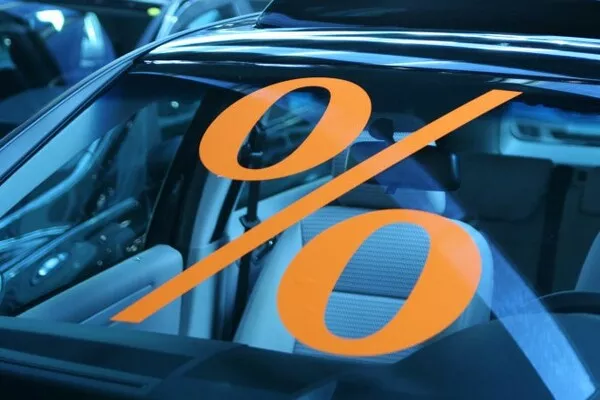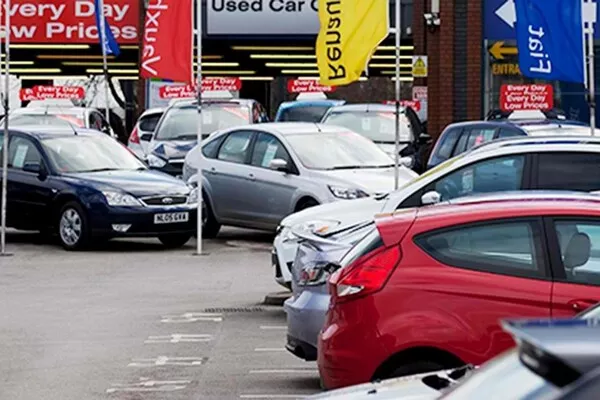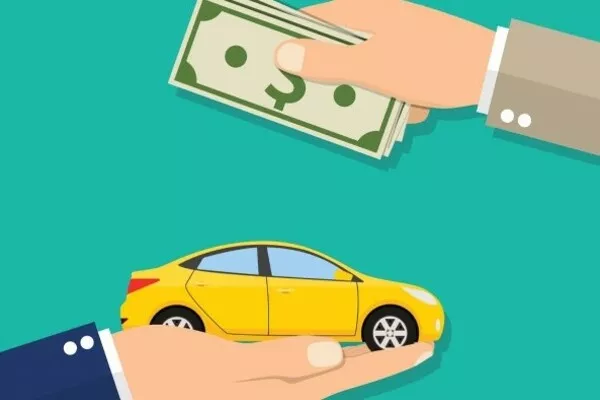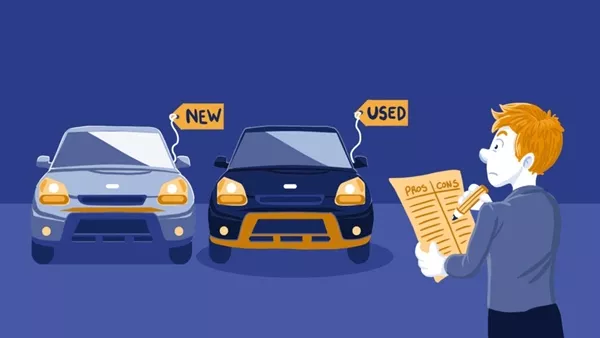Choosing which car to buy is a tough task already, and the search gets even harder when you have no idea about the terms thrown around and concepts presented to you in the course of actually buying a car.
But you do have to be aware and informed about the terms and lingo so you always know what you’re getting into and have a clear, complete picture of what you’re getting into.

Do you think that you understand all terms when making a car purchase?
Here are some of the relevant terms you need to acquaint yourself, courtesy of Philkotse.com.
1. Annual percentage rate
This is also recognized as the finance rate or the APR. Put simply, this is the interest on a particular loan. This is a percentage of the total amount borrowed but calculated for 12 months.

The annual percentage rate is also recognized as the finance rate
2. As is
It simply means that what you see on or in the car is being sold with it. In some cases, “as is” vehicles usually don’t come with warranties of any sort. Any trouble that may arise will be shouldered by the buyer.
3. Balloon loan/ balloon payment
Loans usually pay off a fraction of the car’s total cost via monthly payments. The remaining balance will be composed of one large amount. This will be the balloon. This will have to be paid at the end of the term of the loan.

Balloon loan or balloon payment is usually a loan that pays off a fraction of the car’s total cost via monthly payments
>>> Grab your attention: What you need to know about car loans in the Philippines
4. Bump
This is a bit confusing for some. But there can actually be a huge difference between the rate that the dealer sells the vehicle to you and the rate that they pay for financing on a loan or lease. This is what the bump is.
Most rates are generally at 1% so it’s best you shop around for a loan outside the dealership. Banks and credit unions are usually a better choice but then again, research is still key.
5. Buy rate
This is the rate in which the car dealer gets financing. The dealer can offer you financing but for a higher cost. The difference is then for him to keep.

Buy rate is the rate in which the car dealer gets his financing
>>> Check out: 8 problems with dealerships that car buyers should be aware of.
6. Buyout price
This refers to the price of buying the vehicle after the lease term has ended. If you think you’d like to buy your vehicle after the lease term, compare the cost of purchasing after the lease to the cost of outright buying it.
7. Capitalized cost
This refers to the total sum that’s being financed via lease. This could be the vehicle or any other extras. The capitalized cost reduction must also be subtracted here.
8. Capitalized cost reduction
This refers to absolutely anything that can lower the amount that’s financed through the lease. This is usually a trade-in or a down payment.

Capitalized cost reduction is usually a trade-in or a down payment
9. Cost of funds
This refers to the money factor, the APR or rents charge. This is the amount that’s charged by the lender (like the bank) for using their money to get you your car. This is also known as financing costs.
10. Dealer holdback
This is a small fraction of the price of the vehicle that’s paid by the manufacturer to the dealer once a unit is sold. This lets dealerships sell vehicles even at invoice price (or lower) while still making money.

The dealer holdback is a small fraction of the price of the vehicle that’s paid by the manufacturer to the dealer once a unit is sold.
11. Dealer incentives
These are usually special offers coming from car manufacturers that are passed on to dealers and then to customers. This is usually done on either of two occasions. First, if the sales are noticeably low. The second is when there are tons of inventory available.
12. Dealer invoice
This is how much the manufacturer charges a particular dealership for the vehicles.
>>> Read more: Buying tips: 6 things you need to know about dealer's invoice.
13. Dealer prep fees
This is the charge that the dealership adds to the bill once a new car is purchased. This is for preparing the car after it’s transported to the dealership. This is sometimes negotiable.
14. Default
This is the term used to refer to the failure of a client to make his payments.
15. Destination charge
This refers to the charge of transporting the vehicles to the dealership once they leave the factory. The destination charge that appears on the dealer’s invoice is non-negotiable. But you should never be asked to pay an additional destination charge unless you agreed to it.

You should never be asked to pay an additional destination charge unless you agreed to it
16. Down payment
This is something almost everyone already knows. Downpayment is the cash that’s paid by the borrower upfront to lessen the amount financed through the loan. A large down payment will usually mean lower monthly payments.
17. Early termination fee
These are the penalties that come with withdrawing from the lease or loan before the scheduled end date. These penalties are usually large and are best avoided.
18. Extended warranty
This is also recognized as the “service contract.” This is an agreement that the company will cover particular parts, services, and repairs even after the factory warranty has expired. This is best to study first because some can offer very little coverage and can even come as scams.
>>> Make sure you know: Everything drivers need to know about car warranty

Make sure that you understand about the extended warranty
19. Lease
This is a rental where the dealer buys a vehicle and lets a client lease it for a long period of time. They can also agree on mileage. Either way, the client is subjected to monthly payments. After the lease term, the lessee can decide to either return the vehicle or buy it.
20. Lease extension and lease payment
This refers to the agreement wherein the lessor and lessee agree to extend the lease of the vehicle beyond the original term. Regarding lease payment, this is the amount that the lessee needs to pay every month for leasing the vehicle. This is total if you add the depreciation charge, the rent charge, and other taxes.
Recent posts
- Used-car buying tips: Top 4 safest midsize SUVs of 2015 Nov 16, 2021
- Car buying tips - Things you might not know about car antenna Aug 09, 2022
- Used car buying tips: How much should I pay for a used car? Aug 09, 2022
- Car buying tips: 5 simple steps to check the engine of a used car Nov 30, 2022
- Car buying tips & tricks to avoid hidden fees from dealers Oct 22, 2020












